
How to Use AMS1117-3.3V: Examples, Pinouts, and Specs
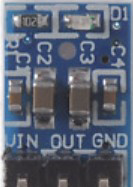
 Design with AMS1117-3.3V in Cirkit Designer
Design with AMS1117-3.3V in Cirkit DesignerAMS1117-3.3V Linear Voltage Regulator Documentation
1. Introduction
The AMS1117-3.3V is a low dropout (LDO) linear voltage regulator designed to provide a stable and regulated output voltage of 3.3V. It is capable of delivering up to 1A of output current, making it suitable for a wide range of low-power electronic applications. The AMS1117-3.3V features built-in thermal shutdown and current limiting to protect the device and connected circuits from damage due to overheating or overcurrent conditions.
Common Applications
- Powering microcontrollers (e.g., Arduino, ESP8266, ESP32)
- Voltage regulation for sensors and modules
- Battery-powered devices
- Low-noise analog circuits
- General-purpose 3.3V power supply for embedded systems
2. Technical Specifications
The following table outlines the key technical specifications of the AMS1117-3.3V:
| Parameter | Value |
|---|---|
| Output Voltage | 3.3V |
| Input Voltage Range | 4.5V to 15V |
| Maximum Output Current | 1A |
| Dropout Voltage | 1.1V (at 1A load) |
| Quiescent Current | 5mA (typical) |
| Operating Temperature Range | -40°C to +125°C |
| Thermal Shutdown | Yes |
| Current Limiting | Yes |
| Package Types | SOT-223, TO-252, TO-263 |
Pin Configuration and Descriptions
The AMS1117-3.3V is typically available in a SOT-223 package. The pinout is as follows:
| Pin Number | Pin Name | Description |
|---|---|---|
| 1 | GND | Ground connection |
| 2 | VOUT | Regulated 3.3V output |
| 3 | VIN | Input voltage (4.5V to 15V) |
| Tab | GND | Ground (connected to the heatsink for thermal dissipation) |
3. Usage Instructions
How to Use the AMS1117-3.3V in a Circuit
- Input Voltage: Connect a DC voltage source (4.5V to 15V) to the VIN pin. Ensure the input voltage is at least 1.1V higher than the desired output voltage (3.3V) to maintain proper regulation.
- Output Voltage: Connect the load to the VOUT pin. The output voltage will be regulated to 3.3V.
- Ground Connection: Connect the GND pin to the ground of the circuit.
- Capacitors: For stable operation, use the following capacitors:
- A 10µF electrolytic capacitor on the input (VIN to GND).
- A 10µF electrolytic capacitor on the output (VOUT to GND). These capacitors help filter noise and improve stability.
Circuit Diagram
Below is a simple circuit diagram for using the AMS1117-3.3V:
+4.5V to 15V
│
│
[10µF] <-- Input Capacitor
│
│
VIN
│
AMS1117-3.3V
│
VOUT
│
[10µF] <-- Output Capacitor
│
+3.3V
│
Load
│
GND
│
GND
Important Considerations
- Heat Dissipation: The AMS1117-3.3V can generate heat when operating at high currents. Ensure proper heat dissipation by using a heatsink or adequate PCB copper area connected to the ground tab.
- Input Voltage: Avoid exceeding the maximum input voltage of 15V to prevent damage to the regulator.
- Load Current: Do not exceed the maximum output current of 1A. If the load requires more current, consider using a higher-rated regulator.
4. Example: Using AMS1117-3.3V with Arduino UNO
The AMS1117-3.3V can be used to power 3.3V devices from the 5V output of an Arduino UNO. Below is an example circuit and code to demonstrate its usage.
Circuit Setup
- Connect the 5V pin of the Arduino UNO to the VIN pin of the AMS1117-3.3V.
- Connect the GND pin of the Arduino UNO to the GND pin of the AMS1117-3.3V.
- Connect the VOUT pin of the AMS1117-3.3V to the 3.3V device (e.g., a sensor or module).
Example Code
Here is an example Arduino sketch to read data from a 3.3V sensor (e.g., a DHT11 temperature and humidity sensor):
#include <DHT.h>
// Define the DHT sensor type and pin
#define DHTPIN 2 // DHT sensor connected to digital pin 2
#define DHTTYPE DHT11 // DHT11 sensor type
DHT dht(DHTPIN, DHTTYPE);
void setup() {
Serial.begin(9600); // Initialize serial communication
dht.begin(); // Initialize the DHT sensor
Serial.println("DHT11 Sensor Test");
}
void loop() {
delay(2000); // Wait 2 seconds between readings
// Read temperature and humidity from the DHT sensor
float humidity = dht.readHumidity();
float temperature = dht.readTemperature();
// Check if the readings are valid
if (isnan(humidity) || isnan(temperature)) {
Serial.println("Failed to read from DHT sensor!");
return;
}
// Print the readings to the Serial Monitor
Serial.print("Humidity: ");
Serial.print(humidity);
Serial.print("% Temperature: ");
Serial.print(temperature);
Serial.println("°C");
}
5. Troubleshooting and FAQs
Common Issues and Solutions
| Issue | Possible Cause | Solution |
|---|---|---|
| Output voltage is not 3.3V | Insufficient input voltage | Ensure VIN is at least 4.5V and 1.1V above VOUT. |
| Regulator overheating | Excessive load current or poor heat dissipation | Reduce load current or improve heat dissipation. |
| Circuit instability or noise | Missing or incorrect capacitors | Add 10µF capacitors to both input and output. |
| No output voltage | Incorrect wiring or damaged regulator | Verify connections and replace the regulator. |
FAQs
Can I use the AMS1117-3.3V with a 3.7V Li-ion battery?
- No, the input voltage must be at least 4.5V for proper operation.
What is the maximum current the AMS1117-3.3V can handle?
- The AMS1117-3.3V can handle up to 1A of output current, provided proper heat dissipation is ensured.
Can I use ceramic capacitors instead of electrolytic capacitors?
- Yes, but ensure the capacitance value is sufficient (e.g., 10µF) and the voltage rating is appropriate.
Is the AMS1117-3.3V suitable for powering high-frequency circuits?
- The AMS1117-3.3V is suitable for low-noise applications, but for high-frequency circuits, additional filtering may be required.
This concludes the documentation for the AMS1117-3.3V linear voltage regulator. For further assistance, refer to the manufacturer's datasheet or contact technical support.
Explore Projects Built with AMS1117-3.3V
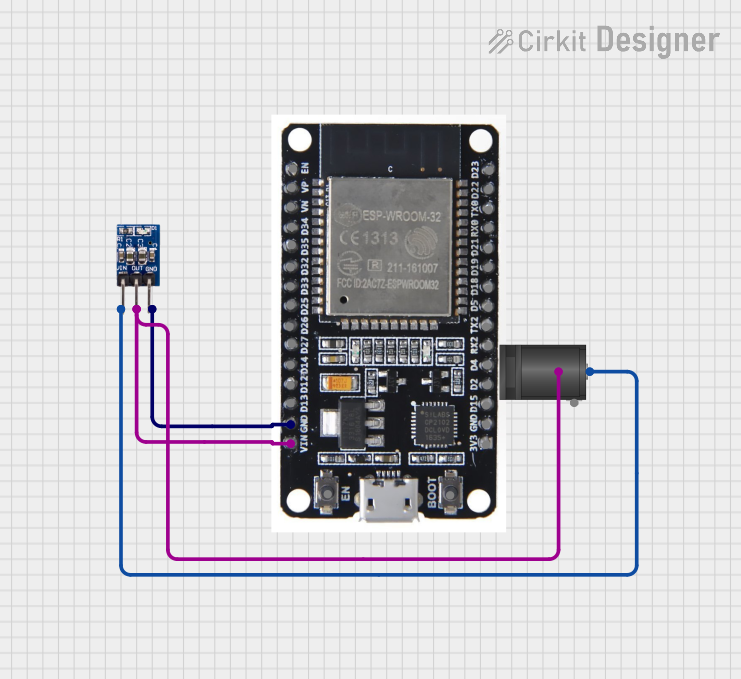
 Open Project in Cirkit Designer
Open Project in Cirkit Designer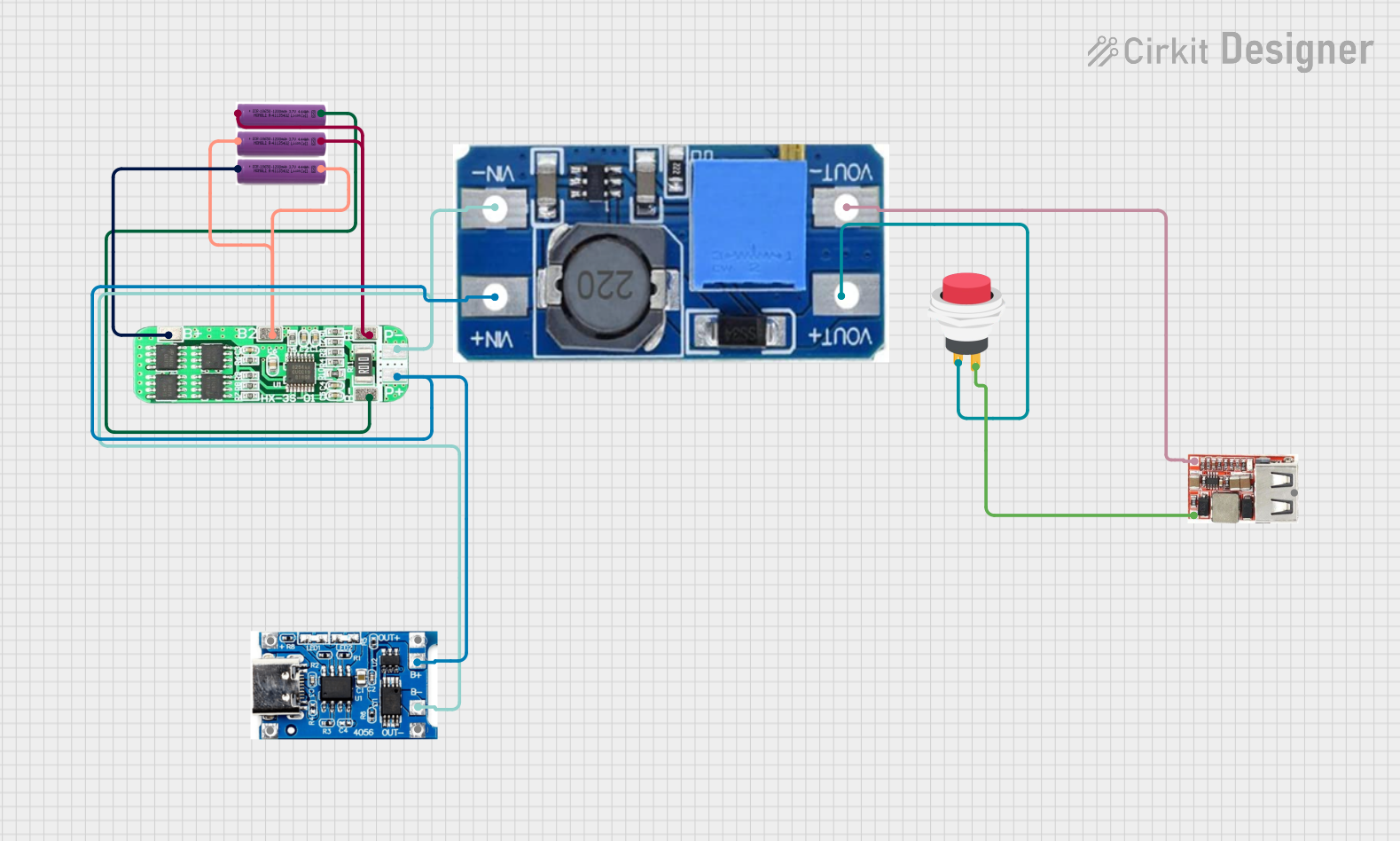
 Open Project in Cirkit Designer
Open Project in Cirkit Designer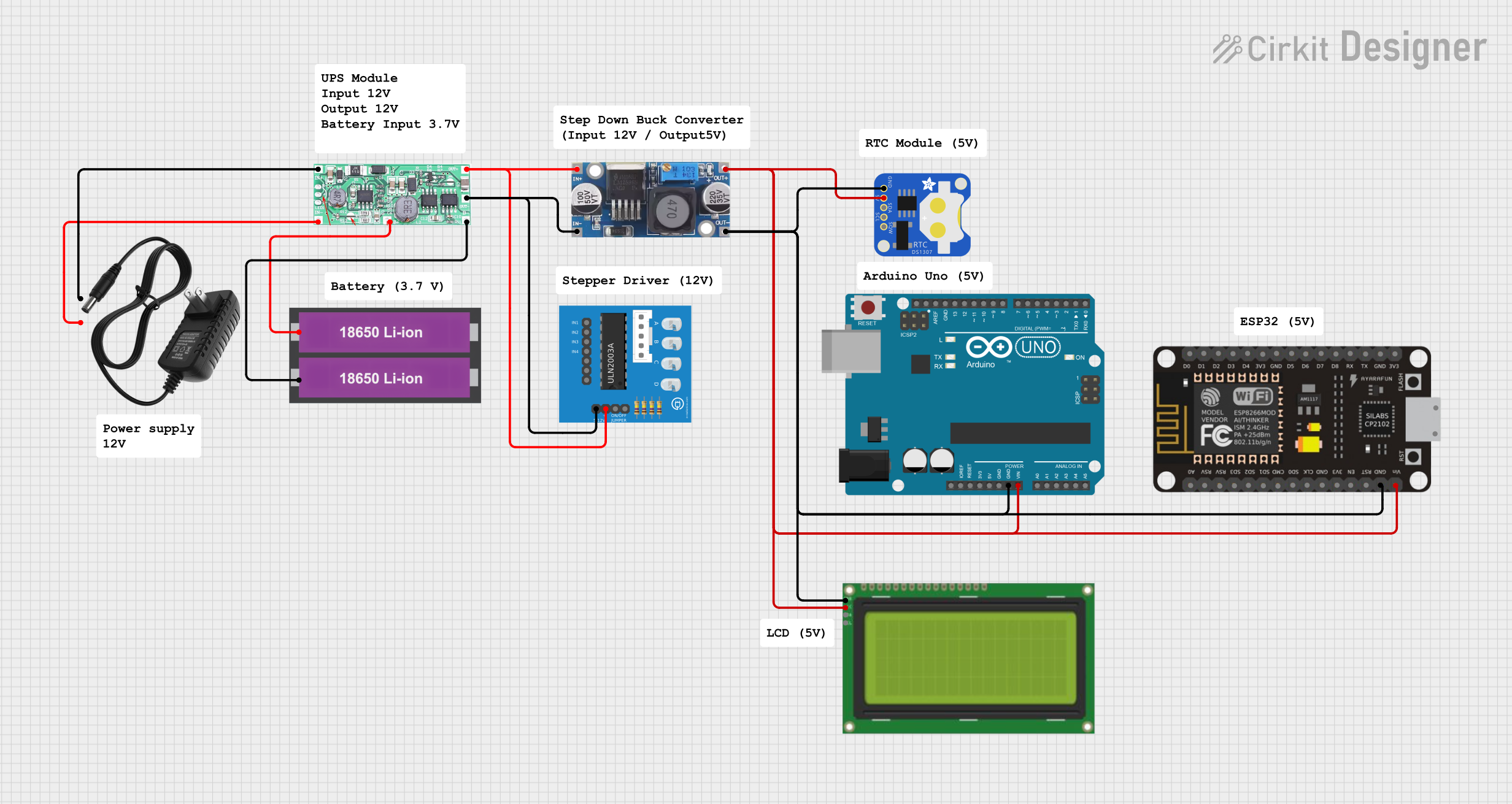
 Open Project in Cirkit Designer
Open Project in Cirkit Designer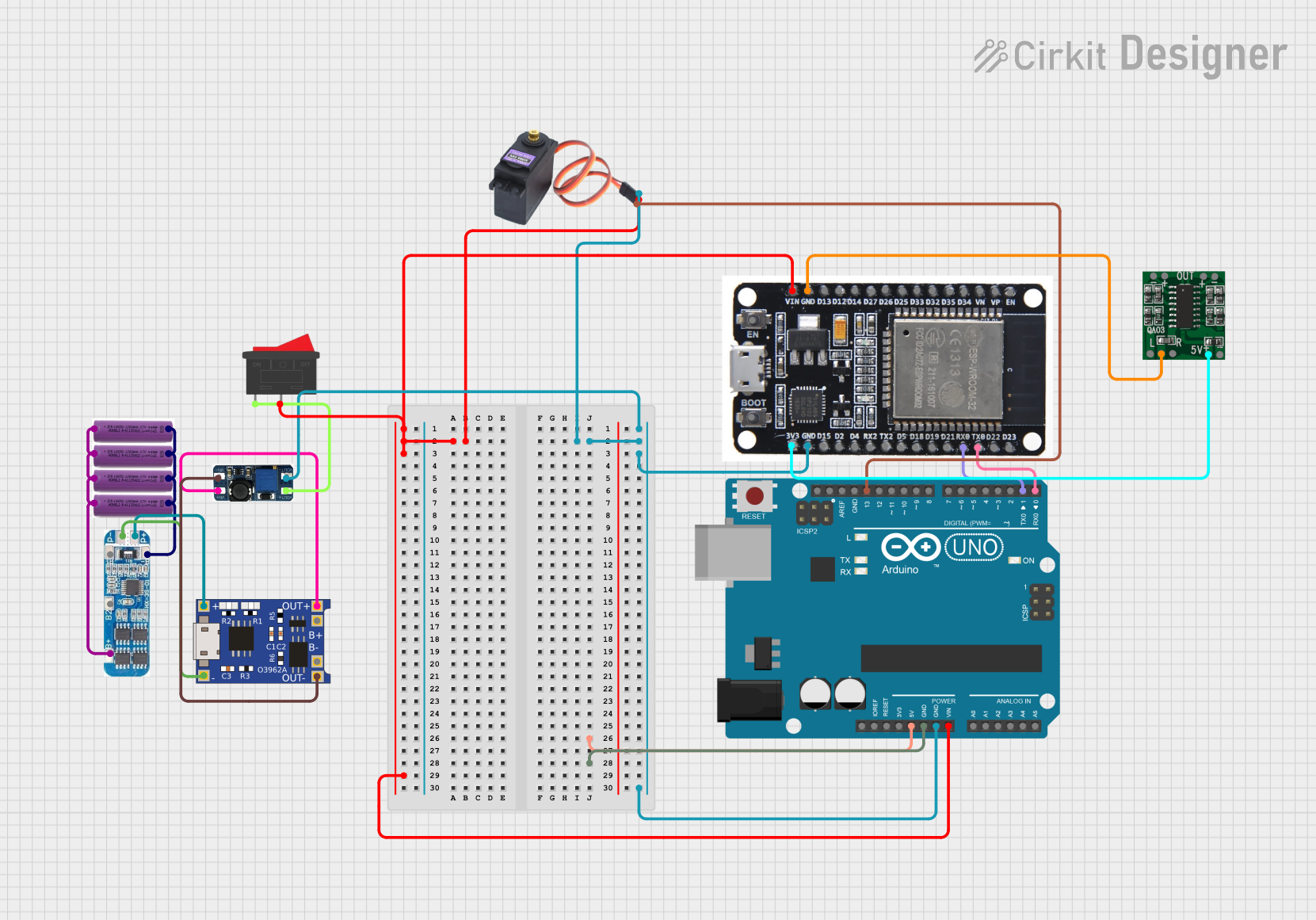
 Open Project in Cirkit Designer
Open Project in Cirkit DesignerExplore Projects Built with AMS1117-3.3V

 Open Project in Cirkit Designer
Open Project in Cirkit Designer
 Open Project in Cirkit Designer
Open Project in Cirkit Designer
 Open Project in Cirkit Designer
Open Project in Cirkit Designer
 Open Project in Cirkit Designer
Open Project in Cirkit Designer